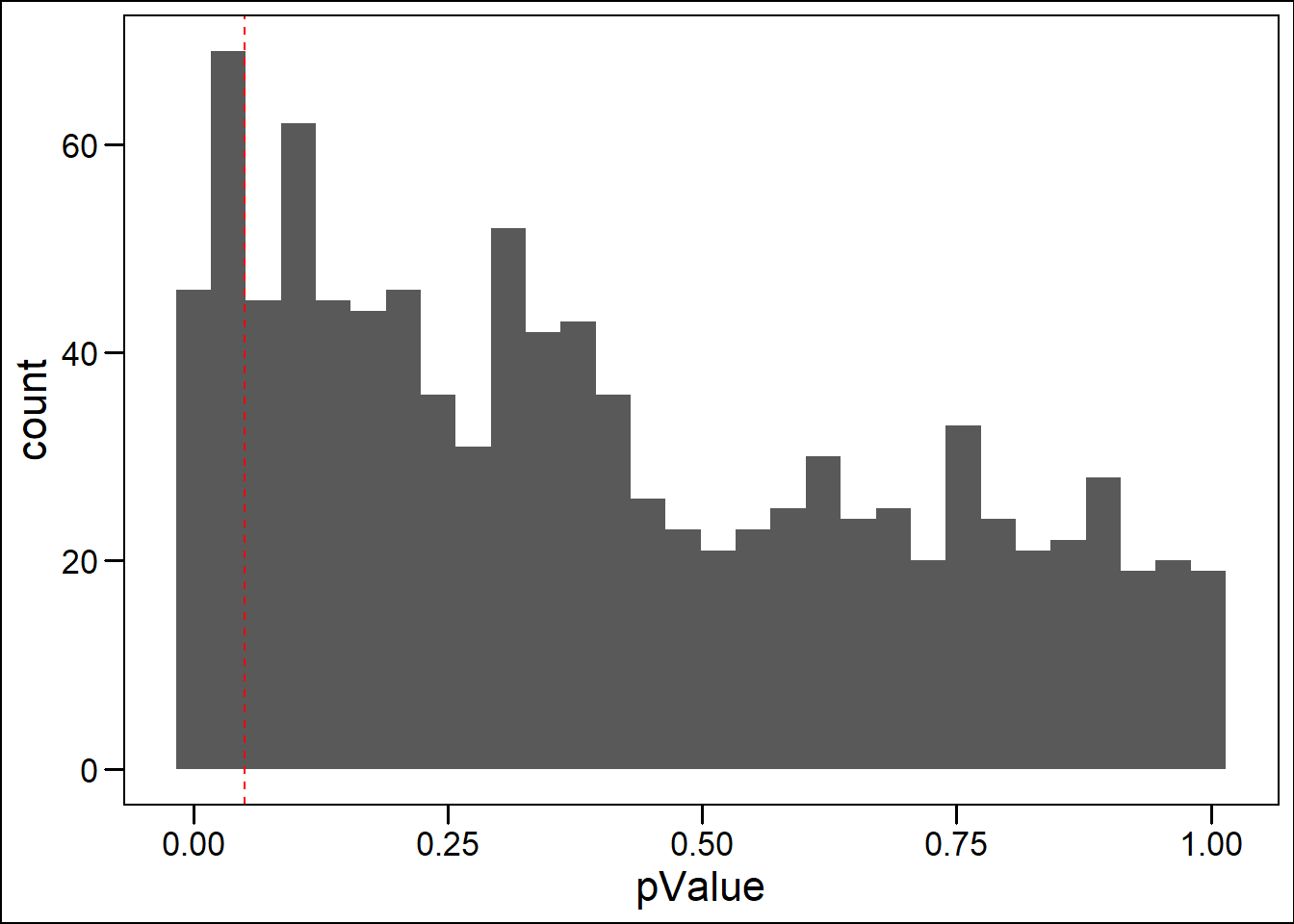── Attaching core tidyverse packages ──────────────────────── tidyverse 2.0.0 ──
✔ dplyr 1.1.4 ✔ readr 2.1.5
✔ forcats 1.0.0 ✔ stringr 1.5.2
✔ ggplot2 4.0.0 ✔ tibble 3.3.0
✔ lubridate 1.9.4 ✔ tidyr 1.3.1
✔ purrr 1.0.4
── Conflicts ────────────────────────────────────────── tidyverse_conflicts() ──
✖ dplyr::filter() masks stats::filter()
✖ dplyr::lag() masks stats::lag()
ℹ Use the conflicted package (<http://conflicted.r-lib.org/>) to force all conflicts to become errors
ttest_sim<-function(nSim=1000, n=6, C_mean=12, T_mean=16, C_sd=2, T_sd=2){
out_frame<-rep(NA,nSim)
for (i in seq_along(out_frame)){
control=rnorm(n,C_mean, C_sd)
treatment=rnorm(n,T_mean, T_sd)
ttest<-t.test(control,treatment)
out_frame[i]<-ttest$p.value
}
data_out<-data.frame(nSim=1:nSim,pValue=out_frame)
data_out |>
ggplot(aes(pValue))+
geom_histogram()+
geom_vline(xintercept = 0.05, lty=2, colour="red")+
ggthemes::theme_base()
}
ttest_sim(nSim=1000, n=6, C_mean=12, T_mean=14, C_sd=4, T_sd=4)
